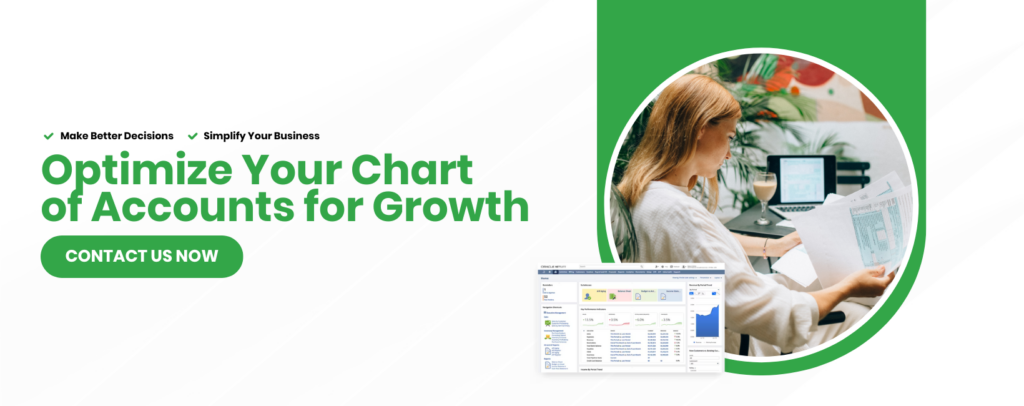Your chart of accounts is typically made up of natural accounts which are then segments by departments, lines of business and locations. Historical accounting systems use long, segmented charts of accounts. If you start a new product line or new location, you have to replicate entire chart of accounts for that new location or product line.
As an example, if you have 300 account numbers and decide to open up a new location, you now have to replicate all 300 accounts. Unfortunately, this is how legacy systems operate. Over time, you have hundreds or even thousands of charts of accounts. The result? An unwieldy system that becomes very difficult to manage.
What you need is a well-engineered chart of accounts that matches your core business financial tracking requirements.
Bring Organization and Flexibility to Your Business
Don’t let your chart of accounts become an unmanageable morass!
A More Agile Approach
An integrated software system can bring much-needed agility and flexibility to the way you manage your chart of accounts through a matrix approach.
Upon entry, instead of having one chart of accounts you have to find, you have separate fields for your natural account, another for location, another for product line and another for department. Now, in the “new location” scenario, there’s no need to replicate the entire chart of accounts.
Rather, you’re simply adding a location. Easily pick the combination of location, department or product line that’s appropriate and you’re off and running.
Businesses using integrated systems can populate a single chart-of-accounts across subsidiaries, or use separate charts-of-accounts for each company within a single instance.
With a robust accounting software solution, it’s easy to add, modify and edit them as well. Reporting is simplified and flexible. Filter by the group, slice and dice information based upon one element within your system, filter by one or multiple locations and then filter further by product line. The options are endless.
Additional Capabilities and Benefits
- Easily change numbers or descriptions
- The ability to easily merge two accounts into one
- Parent/child account functionality to group common accounts together (example: Utilities expense can be a parent account and then within that account, gas, electricity, phone, cable, etc., can be consolidated up into Utilities or examined at a granular level)
Don’t let your chart of accounts become an unmanageable morass. Bring organization and flexibility to your business with a robust accounting software system that will produce the realizable financial reporting documents you need to excel.

If you found the above content interesting, be sure to watch our video on:
Don't miss out on this enlightening discussion on how to harness the profit-boosting potential of your existing customer base. Subscribe now to gain valuable insights and strategies that can reshape your business approach, ensuring sustainable growth and success. Your journey to maximizing customer value begins here!

)





